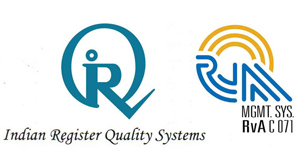
Nippon Corrosion Industry Co., Ltd. has a rich track record of cathodic protection for over half a century.
NIPPON protect important infrastructure such as electricity / gas / water related facilities, road / railway related facilities, marine / port facilities, etc.
There are two types of cathodic protection methods: cathodic protection (cathodic protection) and anodic protection (anodic protection), but the anodic protection is used in a special environment and there are no examples. On the other hand, the cathodic protection method is widely used for ships, harbor facilities, buried piping, etc., so the term “cathodic protection” refers to the cathodic protection method.
The target is metals that exist in electrolytes (substances that conduct electricity such as water, soil, concrete, etc.). In addition to steel, there are aluminum alloys, stainless steel, lead, and copper alloys.
There are a wide variety of ships such as tankers, ore ships, container ships, passenger ships and LNG ships. The anti-corrosion method is indispensable for preventing corrosion of heat exchangers.
In order to prevent marine organisms from adhering to the seawater piping and heat exchangers and blocking the seawater piping system, an antifouling device that electrolyzes seawater and generates hypochlorous acid and a copper electrode are installed. An antifouling device that generates copper ions by electrolysis is installed.

Power Supply

Insoluble Electrode
Cathodic protection
External power supply method
“SEAPAC” (“Seapack”: hull skin automatic corrosion protection device) is an automatic constant potential external power supply for hull skin. Nippon Corrosion has a track record of over 2,000 ships.
“SEAPAC” automatically reduces and optimizes the anti-corrosion condition of the hull, reducing the work burden on the crew and dramatically improving the ship’s operating rate.
Galvanic anode method

Stern that is corroded by Allanode
Nippon Corrosion offers aluminum alloy anode “Aranode” and zinc alloy anode “Ginnode” for hull skins and ballast tanks.
Silvers (propeller shaft grounding device)
When the propeller shaft rotates, it is insulated from the hull by the lubricating oil film, so the cathodic protection device attached to the hull will not be able to protect the propeller.
“Silvers” is a device that electrically connects the hull and propeller shaft to achieve anti-corrosion of the propeller and prevention of spark erosion of the engine, and is installed in many ships built in Japan.
A monitoring instrument is also available to monitor the propeller shaft grounding effect of “Silver”.

Silvers

Monitoring Meter
Iron film formation DEFECON
Power plant / factory equipment
A wide variety of equipment is installed in power plants and various factories to take seawater and industrial water and use it as cooling water. The anticorrosion method is indispensable for the corrosion prevention of these facilities and equipment.
In addition, in order to prevent marine organisms from breeding and adhering to the facilities and equipment in the seawater line and blocking the inside of the line, an antifouling device that electrolyzes seawater and generates hypochlorous acid (adhesion of marine organisms) Prevention device) is installed.
Nippon Corrosion offers the best anti-corrosion and anti-fouling methods based on a meticulous design supported by a wealth of experience.
Cathodic protection

Platinum titanium electrode installed in intake pipe
Dust removal device (screen), strainer, shell removal device

Allanode attached to the screen body

Electrode guide pipe installed on the side wall of the channel
Circulating water pump

Platinum titanium electrode installed on circulating water pump
Circulating water pipe inner surface

Allanode installed on the inner surface of the circulating water pipe
Condenser

Bipolar iron electrode installed in condenser water chamber

Constant potential / constant current control power supply
Heat exchanger

Heat exchanger protected against corrosion by CPZ




